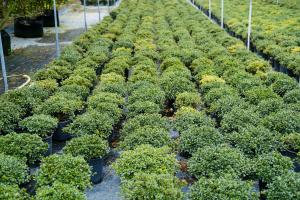Introduction
Water is essential for all living organisms, and plants are no exception. However, plants require a larger amount of water than most other organisms due to the unique structure and functions of plant cells. In this article, we will explore why plant cells need a lot of water and how they utilise it for their survival and growth.
The Structure of Plant Cells
Plant cells have a cell wall, which is a rigid, protective layer surrounding the cell membrane. The cell wall provides support for the plant and helps it maintain its shape. However, it can make it difficult for the cell to take nutrients and water from its surroundings since it limits the movement of materials through the cell membrane. Therefore, plant cells require a lot of water to sustain their processes.
Photosynthesis
Plants use water, carbon dioxide, and sunlight to produce glucose, a sugar that is used as a primary source of energy for the plant. This process is called photosynthesis, and it takes place in the chloroplasts of plant cells. Chloroplasts are organelles that contain chlorophyll, a pigment that absorbs sunlight and converts it into energy.
To perform photosynthesis, plant cells need water to transport carbon dioxide from the environment to the chloroplasts. Water also helps in the production of oxygen, which is released back into the atmosphere during photosynthesis.
Cellular Respiration
Plants also carry out cellular respiration, a process that converts glucose into energy that the plant can use. Cellular respiration occurs in the mitochondria of plant cells.
In cellular respiration, water is needed to break down glucose molecules into smaller units, which then produce energy. Additionally, water is also produced as a by-product of cellular respiration. This water is released from the plant through transpiration, which is the process of water loss from the plant's surface.
Transport of Nutrients and Minerals
Plant cells require minerals and nutrients to grow and develop. These substances are obtained from the soil through the plant's roots. However, since the cell wall limits the movement of materials, water is needed to transport minerals and nutrients from the roots to the rest of the plant.
Water plays a crucial role in facilitating the movement of minerals and nutrients through plant cells. It acts as a solvent, dissolving minerals and nutrients from the soil and carrying them through the root hairs and into the plant's tissues.
Conclusion
In conclusion, plant cells need a lot of water to carry out their processes, sustain their growth and development, and to survive. Water is essential for photosynthesis and cellular respiration, the transport of nutrients, and the maintenance of the plant's shape and structure.
Understanding the importance of water for plant cells can help us appreciate the importance of conserving this precious resource and ensuring its availability for plants and other organisms in the ecosystem.

 how many times do yo...
how many times do yo... how many planted tre...
how many planted tre... how many pine trees ...
how many pine trees ... how many pecan trees...
how many pecan trees... how many plants comp...
how many plants comp... how many plants can ...
how many plants can ... how many plants and ...
how many plants and ... how many pepper plan...
how many pepper plan...






























